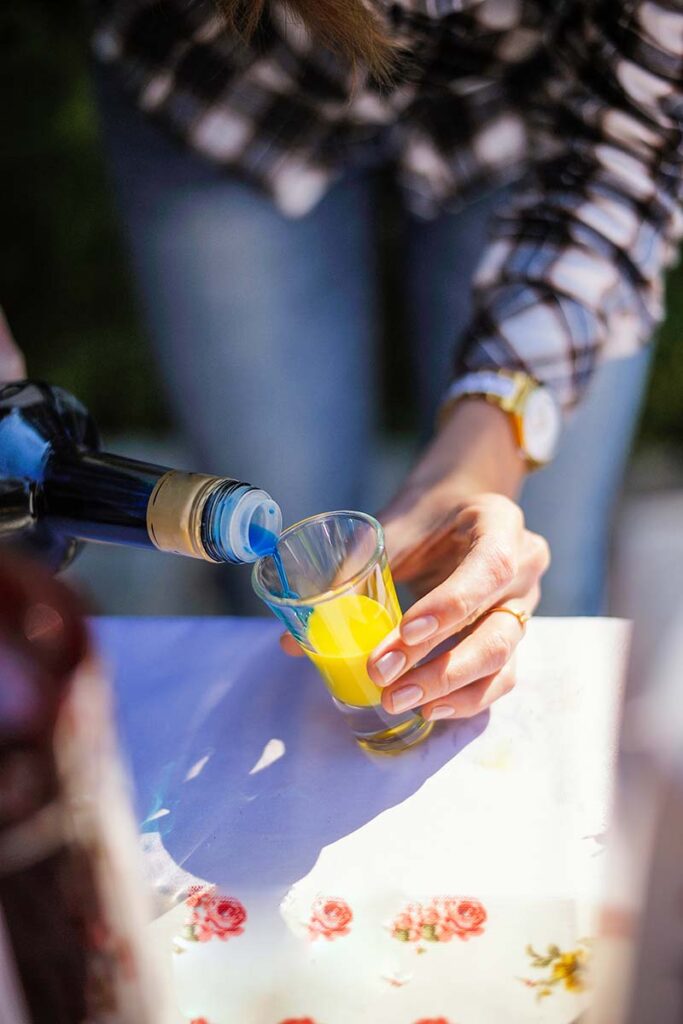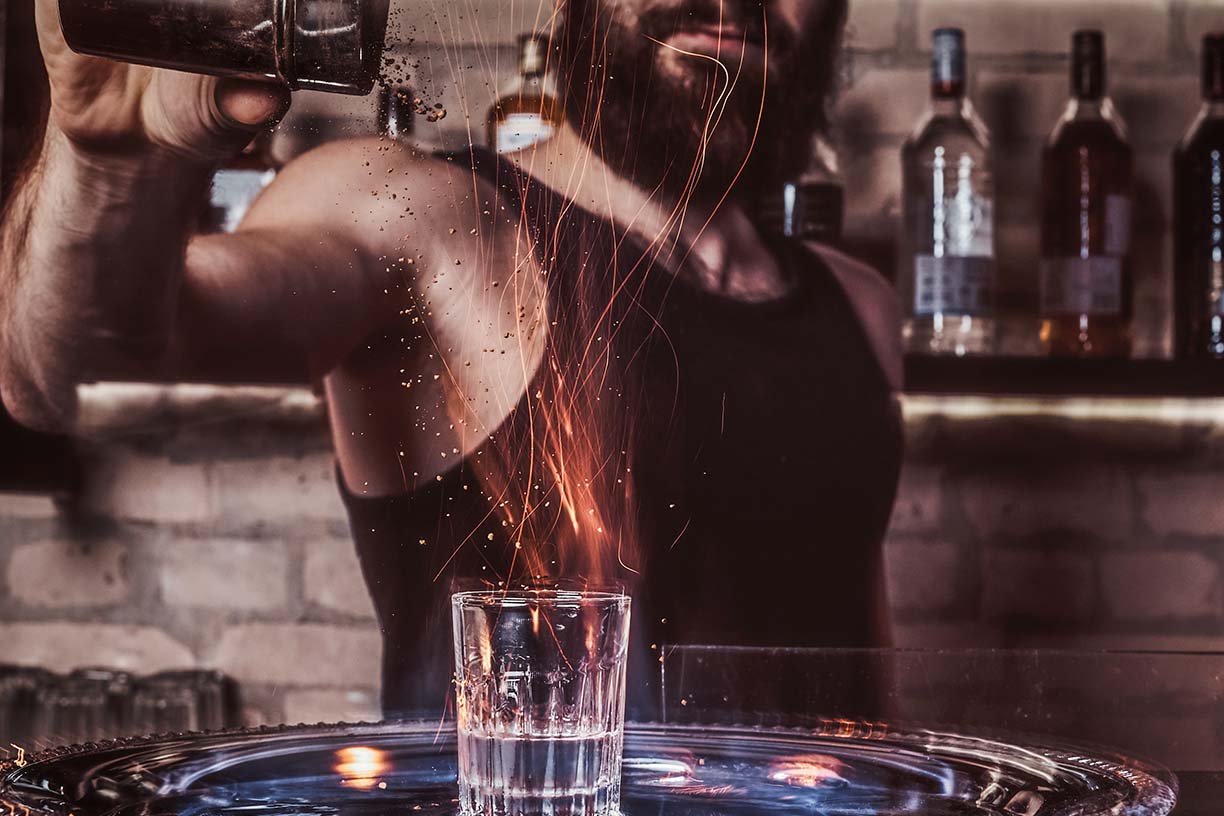In a world where happiness is often equated with indulgence, one of the most enduring myths is that alcohol brings joy. From celebratory to casual occasions, alcohol has long been hailed as a social lubricant and a shortcut to relaxation. However, beneath this veneer of pleasure lies a truth that is often ignored—a truth that reveals the deceptive allure of alcohol and its impact on our well-being.

The evolution of societal norms around alcohol is a fascinating journey through history. In ancient civilizations, alcohol was often intertwined with religious rites and ceremonies, seen as a gift from the gods or a pathway to spiritual connection. It was also a symbol of status and hospitality, with lavish feasts and gatherings showcasing the abundance of alcohol as a mark of prosperity.
As societies progressed, alcohol took on new roles and meanings.
During the medieval period, taverns and alehouses became hubs of social interaction, where people from different walks of life gathered to share stories, ideas, and sometimes, a bit too much ale or wine. The concept of moderation was often overshadowed by the allure of conviviality and camaraderie.
The Industrial Revolution brought about significant changes in how alcohol was produced, distributed, and consumed. Mass production led to greater accessibility, making alcohol a staple in social settings and everyday life. The rise of advertising and marketing further shaped perceptions, associating alcohol with glamour, sophistication, and leisure.
In more recent times, societal attitudes towards alcohol have become more nuanced. The temperance movement of the 19th and early 20th centuries highlighted the dangers of excessive drinking and advocated for moderation. This period also saw the introduction of regulations and policies aimed at curbing alcohol-related harm.
Today, we find ourselves in an era where the conversation around alcohol has expanded to include discussions about health, well-being, and responsible consumption. The glamorization of excessive drinking has given way to a more balanced approach, emphasizing the importance of moderation, informed choices, and the potential risks associated with heavy alcohol use.

Despite these shifts, the myth that alcohol inherently brings joy persists in many circles. It’s a myth that we must continue to challenge and reevaluate, recognizing that true happiness and well-being are not found in a bottle but in the richness of meaningful connections, purposeful living, and a balanced approach to self-care.
Just imagine: pandemic lockdowns, Zoom fatigue, and the sudden blur between brunch and happy hour. Day drinking became not just a trend but a survival strategy, with coffee mugs doubling as vessels for caffeine-fueled productivity and midday cocktails alike. Who knew that our favorite mug would become a symbol of versatility, switching between “Don’t talk to me until I’ve had my coffee” and “Don’t ask what’s in my cup”?
The pandemic era marked a significant shift in how many people approached alcohol consumption. With traditional routines disrupted and the boundaries between work and leisure blurred, the lines around when and how alcohol was consumed also became less defined. What was once reserved for evening gatherings or weekend relaxation now found its way into midday rituals and virtual happy hours.

This shift was not just about convenience but also about coping with the stress and isolation of lockdowns. Alcohol, often seen as a social lubricant, became a tool for managing the challenges of remote work, limited social interactions, and the uncertainty of the times. The familiar rituals of pouring a drink at the end of a long day extended into daytime routines, offering a temporary escape from the monotony of quarantine life.
Coffee mugs, once symbols of morning routines and caffeine boosts, took on new roles as vessels for both productivity and relaxation. The “coffee or cocktail” dilemma became a humorous reflection of the times, encapsulating the blend of work and leisure that characterized pandemic living. It was a time when traditional boundaries around drinking habits were challenged, and the concept of “happy hour” extended well beyond the typical evening time frame.
As we reflect on this period, it’s important to consider how these changes in drinking habits may have lasting effects. The normalization of daytime drinking and the blurring of work-life boundaries raise questions about alcohol’s role in coping mechanisms and the broader impact on mental health and well-being.
But let’s not sugarcoat it—what starts as a harmless way to break up the monotony can quickly spiral into a daily ritual. Soon, the line between “just one” and “one too many” blurs, leaving us questioning where brunch ends and the evening begins. Suddenly, the morning after becomes a game of “What did I do last night?” mixed with a dash of regret and a sprinkle of “I swear I’ll never do that again.”
The pandemic-induced shift in drinking habits brought with it a set of challenges and consequences that many faced. What began as a means of coping with lockdowns and the uncertainties of the times often evolved into a pattern of increased alcohol consumption. The convenience of having a drink during the day merged with the relaxation it provided, creating a blurred boundary between leisure and potential excess.
The transition from “just one” to “one too many” is a slippery slope that many found themselves navigating. The casualness of daytime drinking, initially seen as a break from routine, sometimes transformed into a daily ritual that carried into the evening hours. The normalization of midday cocktails or evening wine sessions became part of the new normal, but with it came the risk of overindulgence.
The morning after became a moment of reckoning for some, as the haze of the previous night’s indulgence collided with the clarity of daylight. Questions of “What did I do last night?” and moments of regret highlighted the potential pitfalls of blurred boundaries and unchecked consumption. The promise of moderation often gave way to moments of excess, leading to a cycle of reassessment and occasional resolutions to cut back.

That’s the problem with drinking, I thought, as I poured myself a drink. If something bad happens you drink in an attempt to forget; if something good happens you drink in order to celebrate; and if nothing happens you drink to make something happen.
Charles Bukowski
It’s important to acknowledge these challenges and recognize the fine line between enjoyment and dependency. The pandemic era served as a reminder of the delicate balance needed when it comes to alcohol consumption, urging us to reflect on our habits and prioritize well-being amidst changing circumstances.
The contrast between sobriety and the blur of alcohol is stark. Sobriety offers clarity—a clear-eyed view of the world, unclouded by the haze of last night’s indulgence. It’s waking up with a clear head and a sense of purpose, ready to take on the day with intention and focus. In contrast, the blur of alcohol obscures reality, distorting perceptions and muddling emotions.
Sobriety brings with it a sense of mental acuity and emotional stability. Without the influence of alcohol, our minds are sharper, allowing us to approach tasks and challenges with a heightened sense of clarity. The fog of intoxication lifts, revealing a world that is more nuanced and detailed than the blurred edges of inebriation.
Emotionally, sobriety allows for a deeper connection with our feelings and experiences. Without the numbing effect of alcohol, we are more in tune with our emotions, able to navigate them with greater awareness and authenticity. This emotional clarity fosters healthier relationships, self-awareness, and a more balanced perspective on life’s ups and downs.
On the other hand, the blur of alcohol can be deceptive. It creates a temporary escape from reality, but at a cost. Perceptions become skewed, and emotions are dulled or exaggerated, leading to impulsive actions and misunderstandings. The line between joy and sorrow, confidence and doubt, becomes blurred, making it difficult to navigate life’s challenges with resilience and clarity.
The morning after a night of drinking often brings a sobering realization of the consequences of the blur. Regrets, missed opportunities, and hazy memories serve as reminders of the trade-off between temporary pleasure and long-term well-being. It’s a cycle that many find themselves caught in, oscillating between moments of intoxication and moments of clarity.

Ultimately, the contrast between sobriety and the blur of alcohol is stark. Sobriety offers clarity—a clear-eyed view of the world, unclouded by the haze of last night’s indulgence. It’s waking up with a clear head and a sense of purpose, ready to take on the day with intention and focus. In contrast, the blur of alcohol obscures reality, distorting perceptions and muddling emotions.
As the pandemic era taught us, true happiness isn’t found at the bottom of a glass but in the moments of connection, laughter, and genuine self-care. The challenges brought about by the pandemic prompted a collective reevaluation of what brings true fulfillment and joy in life. While alcohol may offer temporary relief or a sense of escape, it pales in comparison to the richness of authentic connections and meaningful experiences.
The challenges brought about by the pandemic prompted a collective reevaluation of what brings true fulfillment and joy in life. While alcohol may offer temporary relief or a sense of escape, it pales in comparison to the richness of authentic connections and meaningful experiences.
Virtual happy hours and video calls became lifelines during periods of isolation, reminding us of the power of human connection even in virtual spaces. The shared laughter, inside jokes, and moments of vulnerability created bonds that transcended physical distance, highlighting the resilience of human relationships in the face of adversity.
Self-care also took on new importance, emphasizing practices that nurture our well-being holistically. From mindfulness exercises to creative pursuits, from outdoor adventures to quiet moments of reflection, genuine self-care goes beyond quick fixes and instant gratification. It’s about cultivating a sense of inner peace, resilience, and balance that sustains us through life’s challenges.
The clarity and sobriety that come from prioritizing genuine connections and self-care enable us to approach life with intention and purpose. It’s about finding joy in the everyday moments, appreciating the beauty of simplicity, and fostering a sense of gratitude for what truly matters.
So let’s raise a glass—to moderation, to genuine connections, and to finding happiness that doesn’t come with a hangover.










Em
Dang, this spills the tea like nobody's business!